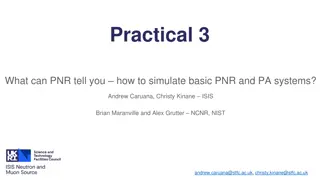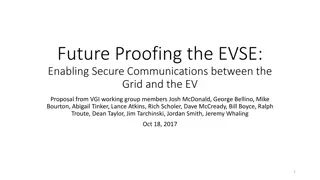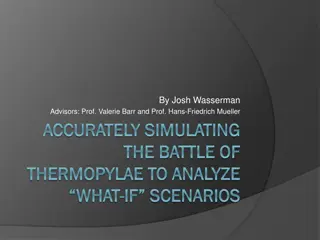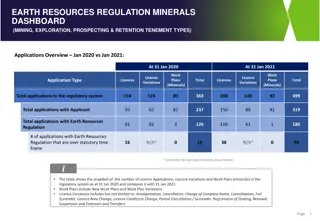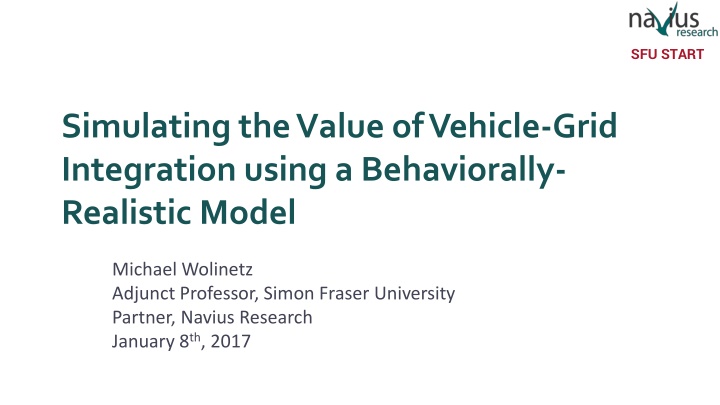
Simulating Value of Vehicle-Grid Integration with Behaviorally Realistic Model
Explore the limitations of past analyses and exogenous inputs in simulating the impact of vehicle-grid integration. Understand how consumer behavior influences participation in utility-controlled charging and the adoption of plug-in electric vehicles. Delve into the dimensions of the analysis framing the impact of deep greenhouse gas reductions by 2050. Discover the benefits of vehicle-grid integration in reducing electricity prices in a GHG-constrained world.
Download Presentation

Please find below an Image/Link to download the presentation.
The content on the website is provided AS IS for your information and personal use only. It may not be sold, licensed, or shared on other websites without obtaining consent from the author. If you encounter any issues during the download, it is possible that the publisher has removed the file from their server.
You are allowed to download the files provided on this website for personal or commercial use, subject to the condition that they are used lawfully. All files are the property of their respective owners.
The content on the website is provided AS IS for your information and personal use only. It may not be sold, licensed, or shared on other websites without obtaining consent from the author.
E N D
Presentation Transcript
SFU START Simulating the Value of Vehicle-Grid Integration using a Behaviorally- Realistic Model Michael Wolinetz Adjunct Professor, Simon Fraser University Partner, Navius Research January 8th, 2017
Limitations of past analyses Little representation of behaviour or policy impact Plug-in electric vehicle (PEV) adoption is assumed VGI participation is assumed (e.g. participation in or utility controlled charging, UCC) Electricity grid is based on the current grid or an assumed future grid 2
Exogenous Inputs: Consumer behaviour Home charge access and power Driving diary data Exogenous Inputs: Vehicle attributes and energy prices Consumer behaviour Transport demand and population Policies Exogenous Inputs: Hourly load for non-PEV end-uses Technology attributes and energy prices Policies Endogenous: Electricity prices for respondents that do/do not participate in UCC Endogenous: Electricity price and discount for PEVs participating in UCC Survey Sample: N=496 in BC N=289 in AB PEV PEV Use and UCC Choice Model Electricity Model Adoption model Endogenous: Stock of PEVs, by respondent Endogenous: Aggregate controllable and uncontrolled PEV load Electricity Model Outputs: Electricity price Capacity and generation GHG emissions Outputs: Vehicle market shares Transport energy and GHG 3
Dimensions of our analysis Framing: impact of UCC with regard to deep GHG reductions out to 2050 With UCC vs. without UCC of PEVs Policy scenario (i.e. Simulate impact of strong GHG policy) vs. forced scenario (i.e. No consumer behaviour, deterministic policy outcomes: only RE, no CCS) Case study regions: British Columbia (BC, with large hydro) and Alberta (AB, no large hydro) 4
Consumer behavior defines the magnitude of UCC participation BC, forced scenario 100% 90% 80% AB, forced scenario % light-duty vehicles participating in UCC Not everyone will buy a PEV, not all PEVs will participate in UCC. 70% 60% 50% 40% BC, policy scenario 30% 20% AB, policy scenario 10% 0% 2020 2025 2030 2035 2040 2045 2050 5
Benefit of VGI: Modest reduction to the price of electricity in a GHG constrained world 0 UCC impact on electricity price -1 -0.6 $/MWh (-0.7%) -0.7 $/MWh (-0.6%) in 2050, real 2010 $/MWh -2 Forced scenarios: -1.7 $/MWh (-1.8%) Everyone buys PEVs -3 Full UCC participation -4 -5 No Carbon Capture and Storage -6 -7 -7.1 $/MWh (-4.2%) -8 BC, policy scenario BC, forced scenario AB, policy scenario AB, forced scenario 6
Potential UCC benefits we did not find: Value of UCC accruing to PEV owners Increased PEV adoption Increased adoption of intermittent renewable generation Reduced GHG emissions 7
Insights Strong policy is still needed for adoption of PEV and low- GHG electricity generation Our hunch: Hype followed by disappointment is a risk to development of VGI VGI should be viewed as one tool among many to provide societal benefit through a smart-grid 8
More Information www.sustainabletransport.ca www.naviusresearch.com Wolinetz, M., Axsen, J. & Peters, J. (Under Review). Simulating The Value Of Vehicle-Grid Integration Using A Behaviourally-Realistic Model. Submitted to Environmental Science & Technology. 9



